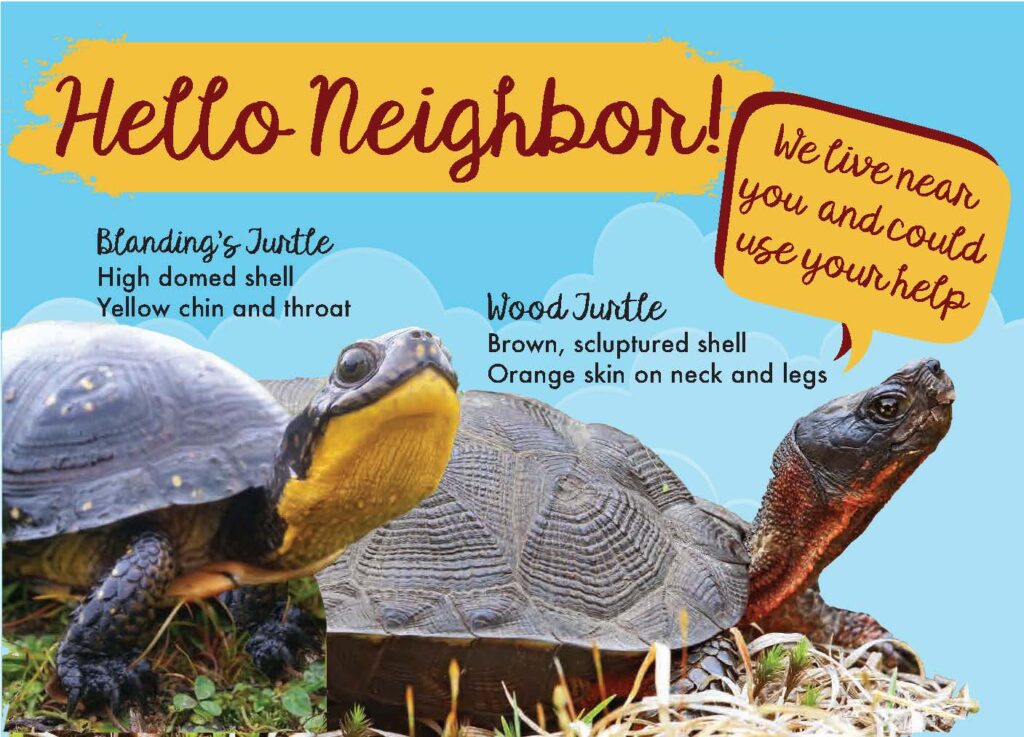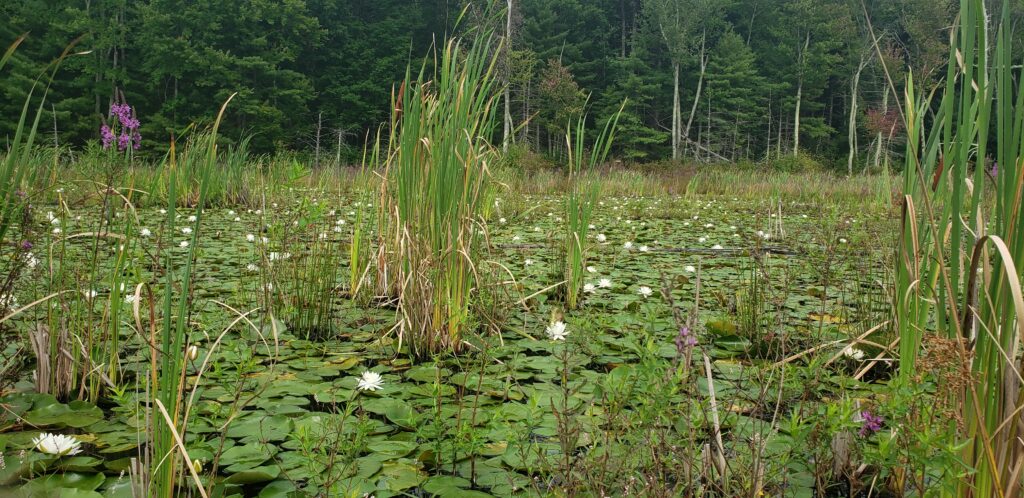This week features a guest post from Senior Field Conservationist John Berkholtz highlighting our newest Blanding’s turtle field site, which was introduced in a separate blog post last summer.
Late summer is a time when our Field Conservation Staff can sit back a little, sip some lemonade and reflect on June’s very hectic nesting season. We’ve protected a total of 29 nests between our Blanding’s, Wood, Box and Spotted turtles. The Lowell-Dracut-Tygnsboro State Forest (LDT) is our newest Blanding’s turtle field site. We began a comprehensive trapping survey of the wetland there back in August 2021, and then resumed trapping surveys this past spring. By June 1st we had caught five adult females and outfitted them with radio transmitters so we could track them to their nesting spots. By June 20th we had an additional five adult females that we were able to radio tag. These five were all found on the same street in Dracut, no more than seven houses apart. How did this happen?

When we begin our nest surveys, we send out informative postcards (above) with colorful turtle pictures to all the abutting streets at our turtle monitoring sites, since most of the turtles nest in people’s yards. This was certainly true for neighborhoods next to the LDT state forest. Because this was the first year doing nest surveys among the abutting LDT neighborhoods, there was a lot of community outreach. Our staff along with dedicated volunteers from the Lowell Parks and Conservation Trust (LPCT) would often explain to neighbors outside what we were doing, especially as we were walking down the street with strange equipment on us (including antenna, cable and radio receiver). Also, we needed to contact homeowners if a Blanding’s turtle was wandering around or even nesting in their yard. Folks were always amenable and often excited to know that there was a rare species in their neighborhood.

Once our postcards arrived, residents mentioned they had received them and were aware of our turtle hotline number they could use to call, text, and send us a picture to confirm what kind or turtle was in their yard. This method of finding turtles worked well; we received three messages that each led to a new turtle being found. Another untagged turtle was crossing the street at the same time we were responding to one of these calls. We also received a tip that a radio tagged turtle was in someone’s yard about ready to nest. These results really underscore the benefits of community involvement in protecting rare turtle nests!
We also got to know several local families over the course of our work. The kids in the neighborhood would often follow us helping us to find turtles, including another new unmarked female. They would eagerly help us ring bells and explain to the homeowner there was a Blanding’s turtle in the yard and ask if we could get permission to check on it. Here, all the neighbors know each other so having these young people as ambassadors certainly was a plus. A total of five turtles nested within a seven-house radius, so most of these families had a rare turtle nest in their yard or the house next door. Another nest was found down the street making for a total of six nests protected. Based on neighbor reports at the end of June, we might even have missed one or two more turtles. Everyone that had a nest in their yard or even vegetable garden was excited.

Amazingly, these turtles had likely all nested here before, perhaps for well over a decade as some were more than 30 years old. Turtles often go to the same general area to nest year after year. That means many of the folks living here never knew a state listed species was living next door at the LDT State Forest and nesting and laying eggs in their yards. That’s not too surprising, when you think about it. Blanding’s turtles’ nest in the evening and are almost impossible to see at night, and they cover their nest holes so well it looks like nothing ever happened. Confusion with the much more common Painted or “Sun” turtle is another factor that makes it hard to know when Blanding’s turtles are around. That neighborhood now knows they have something special and can contribute in a small yet very personal way to the conservation of this species. They are essential partners in our effort to monitor this species. Though the school year was ending at the time, these young folks and their parents will be able to share with their teachers an exciting and very local conservation project. More broadly, the volunteers from the Lowell Parks and Conservation Trust are amazingly dedicated to promoting land stewardship and conservation in Lowell. This was their first time seeing and assisting in the conservation of the rarest turtle found within the Lowell city limits and one of the rarest in the adjacent towns. Their outreach efforts and practical help here were greatly appreciated.
